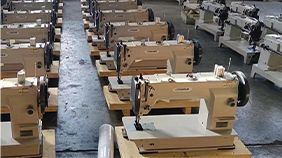Choosing the Right Needles for Seamless Leather Stitching Projects
Needles for Leather Stitching A Comprehensive Guide
When it comes to leatherwork, choosing the right tools is crucial for achieving professional-quality results. One of the most important tools in any leatherworker's toolkit is the needle. While it may seem like a simple implement, the right needle can make all the difference in the quality of your stitching and, ultimately, your finished product. This article delves into the different types of needles suitable for leather stitching, their unique characteristics, and tips on how to choose the best one for your project.
Understanding Leather Needles
Leather needles are specifically designed to work with the dense materials used in leather crafting. Unlike regular sewing needles, leather needles have a unique design that allows them to pierce through tough leather without tearing or damaging the material. The most notable feature of leather needles is their wedge-shaped point, which effectively separates the leather fibers as it goes through the material, rather than pushing them apart. This minimizes the risk of creating unsightly holes or weakening the structure of the leather.
Types of Needles for Leather Stitching
There are several types of needles that you can use for leather stitching, each serving different purposes and preferences
1. Standard Leather Needles These are the go-to option for most leather sewing projects. They come in various sizes, typically ranging from 90/14 to 110/18. The size you choose will depend on the thickness of the leather and the type of thread you’re working with.
2. Chap Needle A variant of the leather needle, the chap needle features a longer and slightly more rounded point. This design allows it to work efficiently with thicker leather materials, such as those used in making chaps or bags.
3. Curved Needles When working on projects that require stitching around curves or in tight spaces, curved needles can be very useful. They come in a variety of sizes and can make it easier to access hard-to-reach areas of your leather project.
needles for leather stitching

4. Twin Needles For decorative stitching or parallel lines, twin needles can be employed. These consist of two needle points on a single shaft and allow you to sew two lines simultaneously, which can enhance the aesthetics of your leatherwork.
5. Awl While not a needle in the traditional sense, an awl is a vital tool for leather stitching. It is used to create pilot holes in the leather before stitching, making it easier for the needle to penetrate the material and ensuring even spacing in your stitching.
Choosing the Right Needle for Your Project
Selecting the appropriate needle for your leather project involves understanding the thickness and type of leather you're using. Heavier leathers, such as tooling leather, require larger needles with wider eyes to accommodate thicker threads. Conversely, lighter leathers can be sewn with smaller needles.
Additionally, consider the type of thread you'll be using. Thread is available in various materials, such as polyester, nylon, or waxed cotton, each requiring different needle sizes for optimal results. As a general rule, the thread diameter should match the needle size to ensure smooth stitching.
Maintenance and Care of Your Needles
Proper maintenance of your leather needles is essential for ensuring longevity and performance. Always store them in a safe place to avoid damage. If you notice that your needles are becoming dull or bent, it's important to replace them promptly, as worn needles can lead to uneven stitches and a messy finish.
Conclusion
In summary, the right needle is vital for any leather stitching project. Understanding the different types of needles and their specific applications will help you choose the most suitable one for your work. Whether you are crafting a simple leather wallet or an intricate leather garment, the right needle can enhance your techniques and improve the overall quality of your finished piece. Investing in quality needles and taking care of them will ensure that your leather projects are not only functional but also beautiful and durable. Happy stitching!
-
Industrial Cylinder Arm Sewing Machine: Revolutionizing Heavy-Duty SewingNewsJul.28,2025
-
Cylinder Arm Sewing Machine: Perfect for Special Sewing ApplicationsNewsJul.28,2025
-
Cylinder Bed Sewing Machine: Essential for Sewing Complex MaterialsNewsJul.28,2025
-
Heavy Duty Sewing Machine: The Essential Tool for Industrial ApplicationsNewsJul.28,2025
-
Computerized Pattern Sewing Machine: Revolutionizing Precision StitchingNewsJul.28,2025
-
Heavy Duty Industrial Sewing Machine: Power Meets PrecisionNewsJul.28,2025
-
Leather Sewing Machine: The Industrial Standard for Tough MaterialsNewsJul.18,2025





























